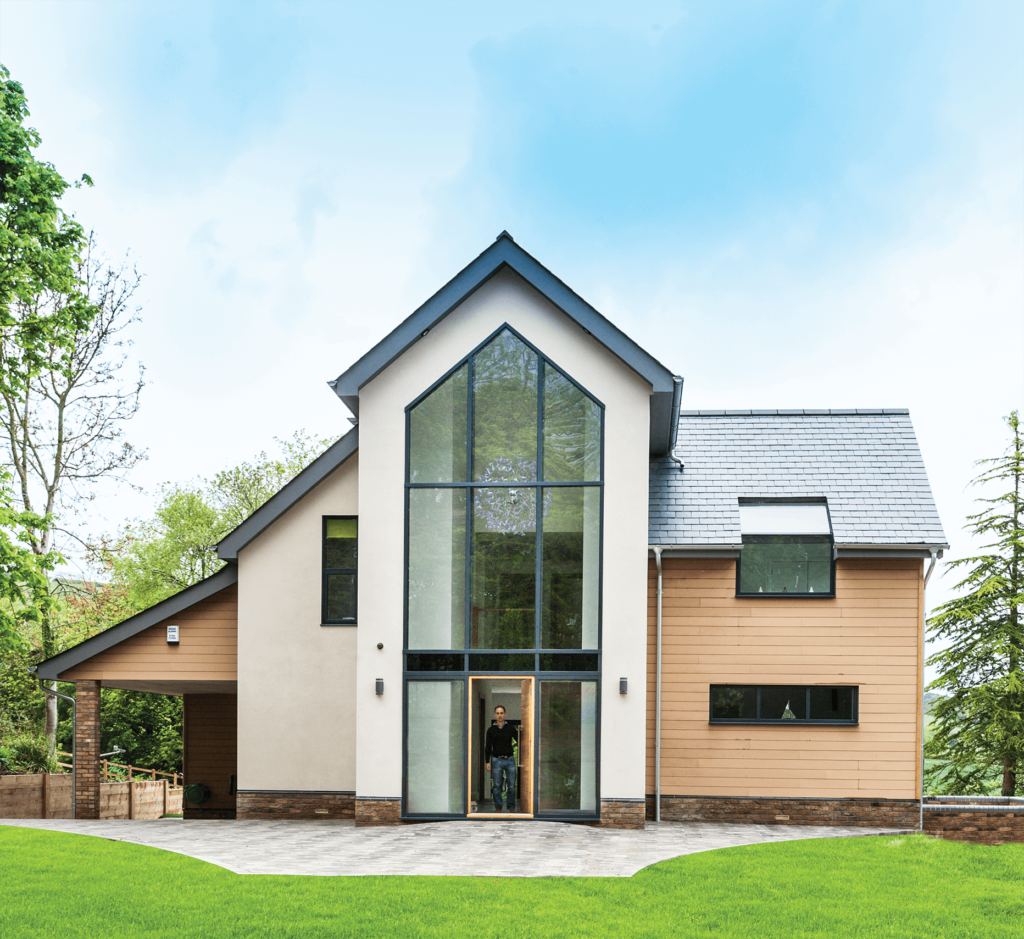What is Minimalist House Design?

Minimalist house design is a design philosophy that emphasizes simplicity, cleanliness, and functionality. It involves using minimal materials, colors, and decorative elements to create a sense of calmness and serenity in a home. The focus is on creating a clutter-free and organized living space that is easy to maintain and navigate. Minimalist design is not just about aesthetics; it’s also about creating a more sustainable and eco-friendly living environment.
Benefits of Minimalist House Design
There are numerous benefits to incorporating minimalist house design into your home. Some of the most significant advantages include:
- Reduced Waste: Minimalist design encourages simplicity and reduces the need for excessive materials and decorative elements. This, in turn, reduces waste and minimizes the environmental impact of construction and maintenance.
- Energy Efficiency: Minimalist homes often feature large windows, skylights, and solar panels, which reduce the need for artificial lighting and heating. This leads to significant energy savings and a reduced carbon footprint.
- Improved Indoor Air Quality: By using natural materials and minimizing the use of chemicals and toxins, minimalist design promotes healthier indoor air quality.
- Increased Natural Light: Minimalist design often incorporates large windows and skylights, which allow natural light to flood the home, reducing the need for artificial lighting and creating a brighter, more welcoming atmosphere.
- Lower Maintenance Costs: Minimalist homes require less maintenance due to the reduced use of materials and decorative elements. This results in lower maintenance costs and a more sustainable living environment.
Design Principles of Minimalist House Design
To create a minimalist home, it’s essential to understand the design principles that underpin this philosophy. Some of the key principles include:
- Simple Color Scheme: A minimalist color scheme typically features a limited palette of neutral colors, such as white, gray, and beige.
- Clean Lines and Shapes: Minimalist design emphasizes clean lines, simple shapes, and minimal ornamentation.
- Natural Materials: Natural materials, such as wood, stone, and plants, are often used in minimalist design to create a sense of warmth and texture.
- Minimal Decor: Minimalist design encourages a minimal approach to decor, with a focus on functional and simple decorative elements.
- Multifunctional Spaces: Minimalist homes often feature multifunctional spaces that serve multiple purposes, reducing the need for excessive rooms and corridors.
Eco-Friendly Features of Minimalist House Design
Minimalist house design is inherently eco-friendly, and there are several features that contribute to its sustainability. Some of the most significant eco-friendly features include:
- Solar Panels: Solar panels are a common feature of minimalist homes, providing a renewable source of energy and reducing reliance on fossil fuels.
- Rainwater Harvesting: Many minimalist homes incorporate rainwater harvesting systems, which collect and store rainwater for non-potable uses, such as flushing toilets and irrigating plants.
- Recycled Materials: Minimalist design often incorporates recycled materials, such as reclaimed wood and recycled glass, to reduce waste and promote sustainability.
- Green Roofs: Green roofs, also known as living roofs, are a feature of many minimalist homes. They provide insulation, reduce stormwater runoff, and create habitats for wildlife.
- Energy-Efficient Appliances: Minimalist homes often feature energy-efficient appliances, such as LED lighting and low-flow showerheads, which reduce energy consumption and water usage.
Case Studies: Successful Minimalist House Designs
There are many successful examples of minimalist house designs that have been implemented around the world. Some notable examples include:
- The Tiny House Movement: The tiny house movement has gained significant traction in recent years, with many individuals and families choosing to live in small, minimalist homes that are often built on wheels.
- The Passive House: The passive house is a minimalist design concept that focuses on creating highly energy-efficient homes that require minimal heating and cooling.
- The Earthship: The earthship is a type of minimalist home that is built into the ground, using natural materials and incorporating features such as solar panels and rainwater harvesting.
Frequently Asked Questions (FAQ)
- What is the cost of building a minimalist home?
The cost of building a minimalist home can vary widely, depending on the materials and design features used. However, minimalist homes are often more affordable than traditional homes due to the reduced use of materials and decorative elements. - How can I incorporate minimalist design into my existing home?
There are many ways to incorporate minimalist design into your existing home, including simplifying your color scheme, reducing clutter, and using natural materials. - Are minimalist homes suitable for families?
Yes, minimalist homes can be suitable for families. In fact, minimalist design can help to create a more organized and functional living environment that is ideal for families. - Do minimalist homes require a lot of maintenance?
No, minimalist homes often require less maintenance than traditional homes due to the reduced use of materials and decorative elements. - Can I still have a beautiful and stylish home with minimalist design?
Yes, minimalist design can be both beautiful and stylish. In fact, minimalist homes often feature clean lines, simple shapes, and natural materials that create a sense of elegance and sophistication.
Conclusion
In conclusion, minimalist house design is a design philosophy that promotes simplicity, sustainability, and eco-friendliness. By incorporating minimalist design principles into your home, you can create a more sustainable and healthy living environment that is beautiful, functional, and cost-effective. Whether you’re building a new home or renovating an existing one, minimalist design is a great way to reduce your carbon footprint and create a more eco-friendly home. With its emphasis on natural materials, energy efficiency, and reduced waste, minimalist house design is an excellent choice for anyone looking to create a more sustainable and eco-friendly living space. By embracing the principles of minimalist design, we can create a better future for ourselves and for generations to come.
Closure
Thus, we hope this article has provided valuable insights into Minimalist house design for eco-friendly homes. We appreciate your attention to our article. See you in our next article!